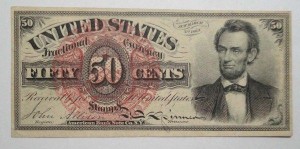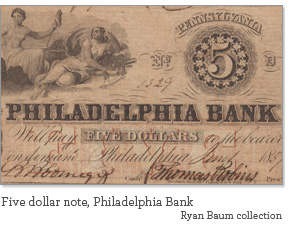National Banking Act of 1863
Posted By Brian Tomlin on February 18, 2013
Prior to the Civil War, banks in the United States were chartered and regulated by individual states. Each state-chartered bank issued its own currency. As the nation’s economy grew throughout the first half of the nineteenth century, this system proved unstable and unreliable, as it depended in the financial practices and lending decisions of thousands of local banks. This meant that the stability of the money system was unreliable and unpredictable.
In 1846 the U.S. Treasury system was created to try to stabilize the economy. By the start of the Civil War, Congress approved the issue of $150 million in national notes. These were issued while the individual state-chartered bank notes were still very much in circulation. After the Civil War began in 1861, the increasing cost of financing the war caused the government’s debt to increase and its supply of gold and silver coins to become depleted.
 The federal government then began issuing paper money that had the same value as coins. These bills were back merely by he government’s promise to redeem them, instead of by a supply of gold or silver as had always previously been the case. These notes were printed in green ink and became known as greenbacks.
The federal government then began issuing paper money that had the same value as coins. These bills were back merely by he government’s promise to redeem them, instead of by a supply of gold or silver as had always previously been the case. These notes were printed in green ink and became known as greenbacks.
The National Banking Act of 1863 was passed February 25, 1863. It was also known at the time as the National Currency Act.
- It provided for a single national currency with the hope that this would eventually replace individual bank issued currencies.
- I established the chartering of national banks, who would issue paper notes backed by the U.S. Treasury and printed by the government. These notes still had the name of the issuing bank on them.
- To help this new centralized currency become the standard, notes issues by the local and state-chartered banks would be taxed.
In 1864, the national Banking act was revised on June 3.
- This established federally issued bank charters, with the intent of totally removing banking from the control of the states.
- The first bank to receive this kind of charter was the First National Bank of Philadelphia.
- This system lasted until 1913.
Sources: Wikipedia article of National Banking Act of 1863, an article on the History of the Federal Reserve, and an article from the U.S. Department of Treasury
 ;
;



Comments